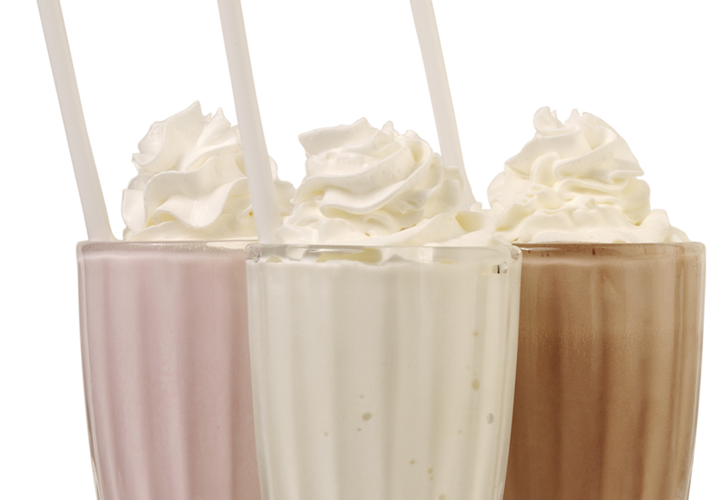If you feel like you’re addicted to food, you’re not alone. While there’s some debate about whether food can truly be physiologically addictive, we’ve all been there, at least to some degree.
A client once shared that he would sneak king cake (and other year-round indulgences) into his office, turn off the lights, and proceed to eat well beyond his body’s natural fullness cues. Then struggle with regret and guilt, beating himself up for not having the willpower to stop.
Another described a sense of euphoria after a 20-piece box of Popeyes followed by a dozen doughnuts, topped off with a gallon of ice cream.
Similar situations play out every day, nearly all with the common underlying theme of self-doubt, shame and a sense that we’re not strong enough.
Most of us have experienced some element of these feelings around food at some point in our lives — that feeling of not being able to stop eating a particular food, no matter how full we feel, or we can’t stop thinking about the (fill in the blank: chocolate, chips, cake, you name it) that’s calling our names from the pantry.
So is it possible to be addicted to food?
The answer is yes, according to Dr. Ashley Gearhardt, associate professor of psychology and director of the Food Addiction Science and Treatment Laboratory at the University of Michigan. Her research centers on addiction, particularly as it relates to food and obsessive eating.
“I’ve always been interested in the mechanisms of addiction — why people get hooked on things that we know are bad for us — yet we do them anyway, we can't stop,” she said.
Gearhardt received her doctorate in clinical psychology at Yale University, where she created the Yale Food Addiction Scale, a 25-point questionnaire used to identify symptoms of dependency toward certain foods.
“It was a natural fit to support the research,” she said. “We used the American Psychiatric Association’s diagnostic criteria for substance use disorders and applied these to people's intake of highly processed foods, assessing things like loss of control, really intense cravings, continued consumption of these foods even if it’s causing problems or getting in the way of other important things.”
High in fat and sugar
Not surprisingly, the foods most linked to addictive-type responses are ultra-processed foods, specifically those high in both fat and sugar.
“These foods are unnaturally rewarding. They are designed to hook us. These ultra-processed foods trigger an addictive process, very much like an addiction to alcohol or tobacco. They impact our brain and make it harder to quit,” said Gearhardt.
“The refined carbohydrates in these foods surpass what we see in nature, and they’re often combined with fat. It’s this carb-fat combination that appears to have a super-impactful intensity on our brain’s reward system.
“Research shows us that when animals are fed high-sugar diets, their brains change much in the same way as when they’re exposed to alcohol or even cocaine. We’ve also seen that if animals — even animals who were hooked on cocaine — had to choose between sugar and cocaine, they would choose sugar 90% of the time. It’s shocking.
“It’s important to note that food doesn't just impact our physical health, but our mental well-being as well. New research is emerging about how diets rich in highly-processed foods fuel anxiety and depression, which then makes us more reliant on these highly processed foods.”
Impetus for change
Addiction often arises from a perfect storm of circumstances, the alignment of three key factors, said Gearhardt.
There’s the personal hardwiring of an individual — their predisposition to addictive behavior. Then there’s the substance — in this case, ultra-processed food. And finally, the environmental influence.
When assessing our own risk factors, Dr. Gearhardt notes that the brain mechanisms in people with food addiction are similar to those in people with substance dependence: Impulsivity, loss of control, extreme cravings, inability to stop even if they want to. Other risk factors include depression, history of trauma and family history of addiction.
When evaluating the substance, she says, the questions include how potent and problematic is this substance.
As for dietitians and other health professionals who insist that ‘there are no good foods, no bad foods, all foods can fit within moderation’? Gearhardt disagrees.
“There is a difference in these foods that makes them harder to stop eating, that doesn’t trigger intuitive satiety signals. It can leave people feeling defeated, as if they just need to try harder.
A risky combination
“We say ‘food’ and it applies to apples and avocados — but it also applies to those Reese’s cups made with potato chips inside,” said Gearhardt. Although rigid food rules should be avoided, she said, foods with that carb-fat combination activate our brains like addictive drugs.
“It’s about understanding where this gradient of risk is for you, individually, related to certain foods. And knowing that science is validating for you that, yes, these foods are activating your brain and influencing your psyche and your emotional well-being.”
The solution doesn’t have to be complete avoidance of all ultra-processed foods. Start by identifying triggers, notes Gearhardt. It may be specific food triggers, so avoiding these particular foods may be helpful, or even necessary for a time. It can also be situational triggers — the people, places or things that are triggering the craving or the overconsumption.
She also notes that hunger — true physical hunger — makes us particularly vulnerable to all addictive substances, so in order to avoid those triggers, have small frequent meals and snacks that are rich in protein, fiber and/or fat.
And then there’s the environment
“Something changed in the 1980s. We have to own that,” said Gearhardt. “Anorexia has been documented in medical literature since the 1600s. We didn't start talking about bulimia or binge-eating disorders in the clinical academic literature until the 1970s, and it really picked up steam in the ‘80s and ‘90s.
“That's the exact moment our food environment changed, and these highly processed industrial foods started to dominate. Now they make up the majority of our calories.
“It's hard for all of us to navigate in a food environment that is so toxic, filled with these foods designed by a trillion-dollar industry to hit our ‘bliss points’, making us want more and more. These foods are on every corner, and they're constantly advertised.
“We need to advocate for policy change to create an environment that’s not so tempting all the time. We’ve done it for cigarettes — there are regulations about how they’re marketed, and there are no longer vending machines with cigarettes on every block,” said Gearhardt. Advocating for a culture that truly promotes health, not just profits at the cost of our well-being.
The best way forward
Be aware that addiction can take many forms, beyond tobacco, drugs and alcohol. As emerging science continues to show us that ultra-processed foods can influence our brains in a similar way that drives addiction, it’s up to us to take ownership of our decisions and what we do with this information.
It’s also important to give ourselves grace. Slow down to explore what’s behind these feelings of food addiction — the people or places or things may be triggering this behavior, the emotional cues, the food or environmental influences.
Ask for help if we need it — working with a registered dietitian and behavioral therapist can give you the support needed to find sustainable strategies to navigate these challenges.
And above all, treat yourself — and anyone dealing with food addiction — with compassion, love and understanding.
Molly Kimball, RD, CSSD is a registered dietitian in New Orleans and host of the podcast FUELED Wellness + Nutrition.




